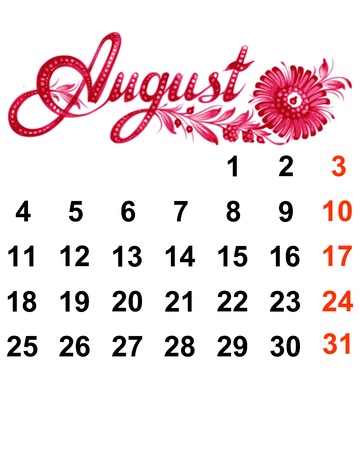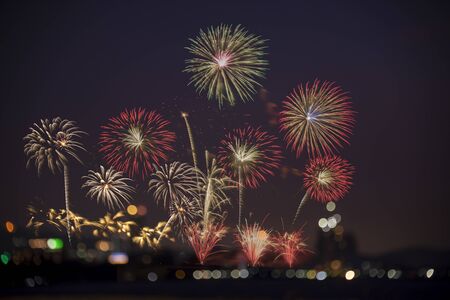Introduction to Rune Casting and British Cultural Heritage
In the heart of Britain’s mist-laden landscapes and ancient woodlands, the practice of rune casting whispers through the ages—an enduring thread woven into the nation’s rich tapestry of folklore and spiritual tradition. Rune casting, a form of divination tracing its roots to early Germanic and Norse peoples, found fertile ground in the British Isles, where it mingled with Celtic mysticism and local customs. The enigmatic symbols of the runic alphabet, carved upon small stones or pieces of wood, carry stories that reach far beyond their origins, echoing through centuries of ritual and celebration. Today, as we gather for British holidays and festivals—whether beneath the festive lights of Yuletide or around the bonfires of midsummer—the presence of rune casting endures as a bridge between past and present. It is not merely an act of seeking guidance; it is an invitation to connect with ancestral wisdom, honour seasonal cycles, and participate in a living heritage that remains vibrantly alive in modern British culture.
2. The Mystique of Runes in Modern Britain
In the ever-shifting tapestry of British culture, rune casting has found a unique resonance, weaving together the echoes of Norse ancestry and the living breath of local beliefs. While runes originated far from the rolling hills of England or the misty valleys of Wales, their symbols have seamlessly interlaced with the British psyche—offering guidance, introspection, and a touch of mysticism during holidays and festivals.
Contemporary Britons approach rune casting not merely as an ancient relic but as a living ritual. Whether at a solstice gathering in Glastonbury or a quiet Samhain night in the Scottish Highlands, individuals gather to draw runes from velvet pouches, trusting both tradition and their own intuition to interpret what emerges. This act is more than divination; it becomes a celebration of heritage and self-discovery, aligning with the British appreciation for both history and personal meaning.
The Interplay Between Norse Symbols and Local Beliefs
Across towns and villages, rune casting is often tailored to reflect local customs. In Cornwall, where legends of giants and mermaids blend with Celtic lore, rune readings may be incorporated into May Day festivities, seeking blessings for the coming summer. In Yorkshire, communities might use runes to honour ancestors during Halloween, blending Norse symbols with local ghost stories.
| Region | British Holiday/Festival | Rune Casting Adaptation |
|---|---|---|
| Cornwall | May Day (Obby Oss) | Blessings for prosperity using fertility runes |
| Yorkshire | Halloween (Samhain) | Ancestral guidance through Eihwaz and Algiz |
| London | Winter Solstice | Community rune draws in public parks |
| Scotland (Highlands) | Beltane Fire Festival | Rune meditations for renewal and protection |
The Role of Intuition in Modern Practice
The British relationship with runes today is quietly intuitive. Rather than rigidly adhering to ancient meanings, practitioners often trust their gut feelings—a nod to both ancestral wisdom and the British knack for subtlety. Drawing a rune during Midsummer’s Eve might prompt one person to recall an old family tale while inspiring another to make a bold new decision.
A Bridge Between Past and Present
This blend of old Norse symbolism with local traditions mirrors Britain’s wider spiritual landscape: open-minded yet deeply rooted. Rune casting during British holidays thus becomes a gentle bridge between past and present—a reminder that every symbol holds both memory and possibility within its lines.

3. Rune Rituals during Beltane and Summer Solstice
As spring’s gentle breath transforms the British landscape, Beltane arrives—a festival of fire, fertility, and renewed life. In villages and woodlands from Cornwall to the Scottish Highlands, communities gather in celebration, weaving ancient customs with modern spirit. Amidst the laughter and blossom-scented air, the practice of rune casting unfurls as both a personal meditation and a communal rite. Picture a circle of friends at dawn on May Day, hands warmed by the last embers of a Beltane bonfire. The group hushes as a storyteller—perhaps an elder or an intuitive soul—draws a small velvet pouch from her cloak. Each person is invited to draw a rune, seeking wisdom for the fertile months ahead. With each symbol revealed—Fehu for abundance, Berkana for growth—the group shares stories and intentions, their voices rising with the larks. In these moments, runes become more than tokens; they are portals, guiding individuals and communities toward hope and harmony.
As June ripens into Midsummer, ancient stone circles like Avebury and Stonehenge become living theatres of tradition. Here, beneath skies streaked with amber light, solitary seekers and families alike bring their runes to sacred ground. Some cast their stones in private reverence among wildflowers; others join spontaneous circles where each rune drawn is woven into collective dreams for the coming harvest. Elders might recount tales of druids consulting runes at solstice dawns past—reminding all that these rituals link them not just to nature’s turning wheel, but to centuries of British lore.
Throughout these sun-drenched festivals, rune casting becomes both mirror and map: reflecting inner desires while charting courses for new beginnings. Whether performed under ancient oaks or beside maypoles festooned with ribbons, these ceremonies blend personal reflection with communal joy—a tapestry unique to Britain’s spirited celebrations.
4. Yule and Winter Festivals: Runes for Reflection and Renewal
As the crisp air settles over the British countryside and the days grow short, communities gather for Yule and other winter festivals steeped in ancient lore. Rune casting takes on a quietly transformative role during these gatherings, providing a gentle but powerful framework for introspection and setting heartfelt intentions for the coming year. The fireside glow, mulled wine in hand, and a hush of snow outside create an atmosphere ripe for ritual—a time to turn inward, honouring both what has passed and what is yet to come.
British tradition embraces the idea of Yule as a turning point—the rebirth of light after the longest night. Rune casting weaves seamlessly into this tapestry, inviting participants to draw runes that speak to renewal, hope, and personal growth. Often, families or close friends will gather around a table adorned with evergreens and candles, each person drawing a single rune or casting a handful onto a cloth. The meanings are then shared in soft conversation, fostering connection and deepening mutual understanding.
| Rune | Traditional Meaning | Winter Interpretation |
|---|---|---|
| Berkana | New beginnings, growth | Setting intentions for personal renewal |
| Isa | Stillness, ice | Honouring rest and patience during winter’s pause |
| Sowilo | The sun, success | Welcoming returning light and hope after darkness |
| Jera | Harvest, cycles | Reflecting on last year’s journey and blessings received |
The process is more than mere divination—it becomes a gentle act of self-care woven into the fabric of winter festivities. In rural villages or bustling city flats alike, rune casting serves as an anchor amidst seasonal revelry. This ritual encourages participants to honour their inner wisdom while also weaving their intentions into the greater story of the community.
The language of runes—at once mysterious and grounding—offers comfort during the introspective nights of December and January. Whether practiced quietly alone by candlelight or shared joyously among loved ones after Christmas pudding, it nurtures a sense of continuity with Britain’s ancestral traditions. As one chapter closes and another dawns with the solstice sun, rune casting is a soulful companion on the journey from reflection to renewal.
5. Harvest and Ancestor Festivals: Runes for Gratitude and Remembrance
As the golden days of summer fade into the crisp embrace of autumn, the British landscape becomes a tapestry of ripening fields and falling leaves. This season is steeped in rituals of thanksgiving and ancestral honouring, with festivals such as Lammas and Samhain woven deep into the heart of local traditions. Rune casting takes on a soulful dimension during these months, serving as both a gesture of gratitude for the earth’s bounty and a bridge to those who came before us.
Lammas: Weaving Thankfulness into the Land
Lammas, or Lughnasadh, marks the first harvest in early August, a time when communities gather to celebrate abundance. Here in Britain, it is common to bake loaves from the new grain and share them among friends and family. Incorporating rune readings into Lammas rituals can deepen this connection. As you cast runes upon a linen cloth or scatter them amongst gathered wheat, each symbol becomes an echo of gratitude—an offering to the spirits of field and family alike. This ancient practice invites us to reflect on our own personal harvests and recognise what we have reaped through hard work, resilience, and community support.
Samhain: Honouring the Veil Between Worlds
As October wanes and Samhain approaches, the air thickens with mystery. Traditionally regarded as the time when the veil between worlds is at its thinnest, Samhain is celebrated across Britain with bonfires, lantern-lit processions, and quiet moments of remembrance. Rune casting during Samhain transforms into a sacred dialogue with ancestors. Many will light candles on their hearths or create altars adorned with autumnal offerings—apples, nuts, dried flowers—and draw runes to seek guidance from those who have passed on. Each rune becomes a whispered message, linking present hearts to ancestral wisdom in a tradition that has endured for centuries.
British Customs: Blending Old Ways with Modern Spirit
What makes rune casting during these festivals uniquely British is its gentle fusion of old-world charm with contemporary mindfulness. Whether gathered around an ancient stone circle in Cornwall or in the warmth of a city flat, people weave together customs from folklore—such as leaving food for wandering spirits or writing wishes on scraps of cloth—with modern interpretations of runic symbolism. Through this blend, rune readings become more than mere divination; they are acts of communal memory and heartfelt thanks, rooting us in our land while connecting us to generations past.
In embracing rune casting at Lammas and Samhain, we participate in rituals that are both grounding and transcendent—drawing strength from the cycles of nature and honouring the enduring presence of our ancestors amid the ever-turning wheel of British seasonal life.
6. Crafting Bespoke Rune Casting Rituals: A British Approach
Across the rolling hills of Yorkshire, the windswept cliffs of Cornwall, and the bustling streets of London, rune casting finds new life when woven into the tapestry of local celebrations. The beauty of runic tradition in Britain lies not in rigid adherence to ancient forms, but in its adaptability—an intuitive dance with place, time, and community spirit. Imagine gathering beneath a centuries-old oak during Beltane in a small Cotswolds village: families might inscribe their own wooden runes, imbuing each with personal hopes or ancestral blessings before casting them upon the May Day bonfire. This act becomes more than divination; it is a living ritual that breathes with the pulse of the land and its people.
Weaving Runes into Family Gatherings
In many British homes, holidays such as Christmas or Samhain invite reflection and togetherness. Rune casting at the family hearth can be gently tailored for all generations. Elders share stories behind each rune drawn, while children may paint their own stones or create simple rune tokens from clay. These practices nurture both memory and imagination, turning each gathering into an evolving circle of wisdom and wonder. Such rituals are not fixed scripts but invitations—each family infusing their own laughter, tears, and dreams into the unfolding tradition.
Village Festivals: Community Connection
Village fetes and seasonal fairs across the UK offer fertile ground for communal rune rituals. In places like Wales or Scotland, rune stones might be hidden along woodland trails during Midsummer festivals, inviting neighbours to seek out messages from the unseen world. Local storytellers could interpret these finds under twilight skies, weaving folklore with present-day hopes. Whether at harvest suppers or seaside solstice gatherings, these intuitive adaptations foster a deeper sense of belonging—to both each other and to Britain’s layered spiritual heritage.
Urban Celebrations: Runes Amidst City Rhythms
The magic of runes does not fade amidst city lights. In London or Manchester, rune casting can become part of multicultural street festivals or quiet moments in urban parks. Groups might gather for New Year’s Eve, drawing runes to set collective intentions for the coming months—a practice that harmonises individual aspirations with the city’s restless energy. Digital communities may also join in via virtual castings, ensuring that even those apart from home find connection through shared ritual.
This living approach to rune casting encourages everyone—from solitary seekers to spirited crowds—to shape ceremonies that reflect their unique story and surroundings. By honouring both tradition and intuition, Britons keep spirituality alive: not as a relic from a distant past, but as a vibrant force shaping modern celebration.
7. Stories from the Isles: Personal Experiences with Rune Casting
Across the rolling hills and cobbled streets of Britain, rune casting has quietly found its way into the hearts of many, becoming a cherished part of holiday celebrations and communal gatherings. In Yorkshire, families gather on the eve of the Winter Solstice, sharing mulled wine by the fire as elders cast runes for guidance and blessings in the coming year. The clatter of runestones on oak tables mingles with laughter, weaving ancient wisdom into modern family traditions.
Down in Cornwall, a close-knit group of friends makes it a point to celebrate Beltane on the moors, where they draw their runes beneath blossoming hawthorn trees. For them, each rune drawn is not just a symbol but a story—prompting heartfelt conversations about hopes, fears, and dreams. These moments anchor them to the land and to each other, as ancestral echoes mingle with the spring breeze.
In bustling London, local pagan circles host open rune casting sessions during major festivals like Samhain or Yule. Here, newcomers and seasoned practitioners alike find kinship around candlelit altars. One participant recalls how drawing the rune Eiwaz one Christmas Eve inspired her to make transformative life changes—an experience she now shares every year as a festive ritual among friends.
Even schools and community centres have embraced this tradition in creative ways. In Edinburgh, teachers introduce children to Norse mythology by inviting storytellers to demonstrate rune casting during Hogmanay festivities. The children’s wide-eyed wonder at the mystery of the runes becomes a lesson in history, imagination, and belonging.
These stories from across the British Isles reveal how rune casting weaves itself through personal memories and collective celebrations. Whether guiding a solitary soul under misty Welsh skies or uniting entire communities on windswept Scottish isles, the practice brings an ineffable magic to holidays—inviting reflection, connection, and hope with every cast stone.

